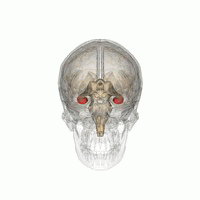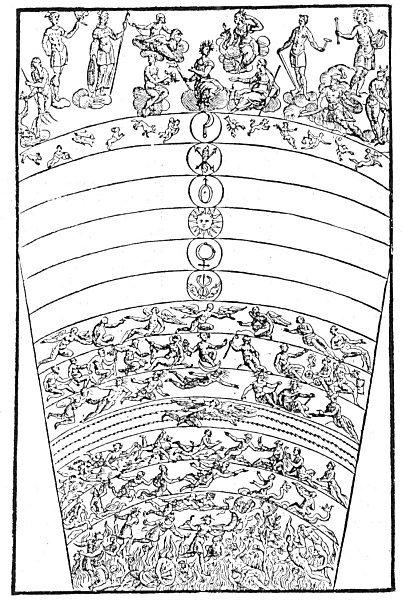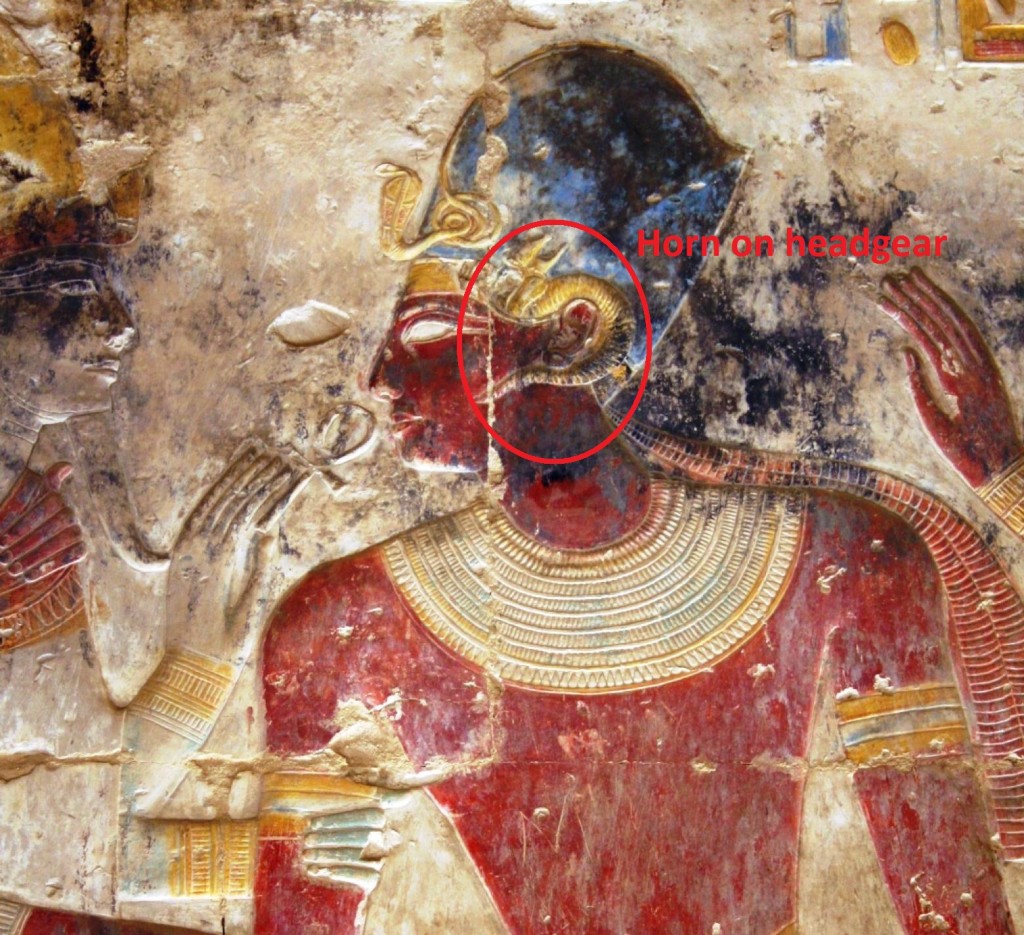 “The Amen, the true and faithful witness,” Rev. i. 14.
“The Amen, the true and faithful witness,” Rev. i. 14.
Amon (Ammon, Amun or Amen) is “The Hidden One” who is “King of the Gods,” and the “Lord of the Thrones” of the visible and the invisible worlds. The “Creator God” who was the mysterious soul of the universe which reveals itself in light. Amon is the light, creator, builder and grand architect of the house and temple. Amon is the Hi-Ram, and those of you that are familiar with Freemasonic allegories and history, can relate Amon to the Hiram Abiff of Solomon’s Temple.
“The Hidden One” who is “King of the Gods” and the “Lord of the Thrones” is not some God you will find outside of yourself in the heavens or carved onto an idolatrous stone by the grand architect of the Universe. Nor will you find this Grand Master inside of a Freemasonic lodge. Au contraire Solomon! This God is hidden deep within you and you must Know Thyself in order to find the mysterious Creator God who is the hidden one, King of Gods and the Lord of “Your” Throne.
The throne where King Amon is located is in Ammon’s Horn or the hippocampus situated in your house, or what is more commonly called the head.
Isaiah 65:16 – Whoever invokes a blessing in the land will do so by the God of truth; he who takes an oath in the land will swear by the God of truth. For the past troubles will be forgotten and hidden from my eyes.
 The Latin Hippocampus is from Ancient Greek ἱππόκαμπος (hippokampos), from ἵππος (hippos, “horse”) and κάμπος (kampos, “sea monster”). All humans have Ammon’s horn which is two hippocampi, one in each side of the brain which is a part of the cerebral cortex, and in primates is located in the medial temporal lobe, underneath the cortical surface. It contains two main interlocking parts: Ammon’s horn and the gyrus.
The Latin Hippocampus is from Ancient Greek ἱππόκαμπος (hippokampos), from ἵππος (hippos, “horse”) and κάμπος (kampos, “sea monster”). All humans have Ammon’s horn which is two hippocampi, one in each side of the brain which is a part of the cerebral cortex, and in primates is located in the medial temporal lobe, underneath the cortical surface. It contains two main interlocking parts: Ammon’s horn and the gyrus.
Let me help illuminate for you exactly where Amon (the hippocampus) is located in your brain. At the top of your brain under the two hemispheres of the cerebrum is part of the brain called the cerebellum. Under the cerebrum and cerebellum is where you will find your brain stem, that which connects the brain to the spine. Lying in the middle of your brain is part of the temporal lobe called the hippocampus or Ammon’s horn.
 In meditations, the hippocampus is what we humans use as a mode of astral travel. In addition, I believe that the hippocampus stores past-life experiences and is that part of the brain we access for ‘past life’ recognition. The hippocampus is critical for the formation of new autobiographical and fact memories. Hence, this section of our brain is how we remember not only past events or locations, but also past lives, and the High Priests of Jupiter Ammon knew this.
In meditations, the hippocampus is what we humans use as a mode of astral travel. In addition, I believe that the hippocampus stores past-life experiences and is that part of the brain we access for ‘past life’ recognition. The hippocampus is critical for the formation of new autobiographical and fact memories. Hence, this section of our brain is how we remember not only past events or locations, but also past lives, and the High Priests of Jupiter Ammon knew this.
From Wikipedia – In the New Kingdom, Amun became successively identified with all other Egyptian deities, to the point of virtual monotheism (which was then attacked by means of the “counter-monotheism” of Atenism). Primarily, the god of wind Amon came to be identified with the solar god Ra and the god of fertility and creation Min; so that Amun-Ra had the main characteristic of a solar god, creator god and fertility god. He also adopted the aspect of the ram from the Nubian solar god, besides numerous other titles and aspects.
As Amun-Ra, he was petitioned for mercy by those who believed suffering had come about as a result of their own or others wrongdoing.
Amon-Ra “who hears the prayer, who comes at the cry of the poor and distressed…Beware of him! Repeat him to son and daughter, to great and small; relate him to generations of generations who have not yet come into being; relate him to fishes in the deep, to birds in heaven; repeat him to him who does not know him and to him who knows him…Though it may be that the servant is normal in doing wrong, yet the Lord is normal in being merciful. The Lord of Thebes does not spend an entire day angry. As for his anger – in the completion of a moment there is no remnant..As thy Ka endures! thou wilt be merciful!”
 It was in the Siwa Oasis at the Temple of Umm Beda (Um Ebeida), where Alexander the Great became the “Son of Amon.” The oasis was the seat of the Temple of Amon (Zeus or Jupiter Ammon). The picture to the right is a coin with Alexander the Great where his Amon’s Horn can clearly be seen.
It was in the Siwa Oasis at the Temple of Umm Beda (Um Ebeida), where Alexander the Great became the “Son of Amon.” The oasis was the seat of the Temple of Amon (Zeus or Jupiter Ammon). The picture to the right is a coin with Alexander the Great where his Amon’s Horn can clearly be seen.
The connection to Amon or the hippocampus is made by author Henri Frankfort who relates Amon to a passage in the Gospel of John: “The wind blows where it wishes, and you hear the sound of it, but do not know where it comes from and where it is going.”[John 3:8][16]
A Leiden hymn to Amun describes how he calms stormy seas for the troubled sailor:
“The tempest moves aside for the sailor who remembers the name of Amon. The storm becomes a sweet breeze for he who invokes His name… Amon is more effective than millions for he who places Him in his heart. Thanks to Him the single man becomes stronger than a crowd.”
Votive stelae from the artisans’ village at Deir el-Medina record:
“[Amun] who comes at the voice of the poor in distress, who gives breath to him who is wretched..You are Amun, the Lord of the silent, who comes at the voice of the poor; when I call to you in my distress, You come and rescue me…Though the servant was disposed to do evil, the Lord is disposed to forgive. The Lord of Thebes spends not a whole day in anger; His wrath passes in a moment; none remains. His breath comes back to us in mercy..May your ka be kind; may you forgive; It shall not happen again.”
The magical hippocampus is the serpent-god of the sea. It appears with the head and body of a horse and large fishlike sea serpent hindquarters. Hippius, a name of Neptune; the Hippocampus was Neptune’s favorite horse. Neptune (Latin: Neptūnus) was the Roman god of water and the sea in Roman mythology and religion, a brother of Jupiter and Pluto. He is the counterpart of the Greek version and one of the ancient gods of Phoenicia under the name of Poseidon. Neptune or Poseidon, is often riding a hippocampus or has his chariot drawn by two of them; his babies are called tadfoals. Scylla, the sea monster or Jonah the Great Fish.
As Manly P. Hall explains this mystery a little further in his Book, the Secret Teachings of All Ages;
Several early church fathers believed that the “whale” which swallowed Jonah was the symbol of God the Father, who, when the hapless prophet was thrown overboard, accepted Jonah into His own nature until a place of safety was reached. The story of Jonah is really a legend of initiation into the Mysteries, and the “great fish” represents the darkness of ignorance which engulfs man when he is thrown over the side of the ship (is born) into the sea (life).
The custom of building ships in the form of fishes or birds, common in ancient times, could give rise to the story, and mayhap Jonah was merely picked up by another vessel and carried into port, the pattern of the ship causing it to be called a “great fish.” (“Veritatis simplex oratio est!”) More probably the “whale” of Jonah is based upon the pagan mythological creature, hippocampus, part horse and part dolphin, for the early Christian statues and carvings show the composite creature and not a true whale.
Amon has also been associated with the biblical Ham (Cham), Hammon or Rammon. The connection being from Ham or Hammon to Ammon that we also find in Ram-mon or Ram-ses, and then of course the Ramses Dynasties. These fascinating connections I will detail further in a future article, but for now, I will leave you this image of Seti I at Abydos.
2 Corinthians 1:20 – For no matter how many promises God has made, they are “Yes” in Christ. And so through him the “Amen” is spoken by us to the glory of God.
Amun (also Amon, Amen, Greek Ἄμμων Ammon, Ἅμμων Hammon) was a local deity of Thebes. He was attested since the Old Kingdom together with his spouse Amaunet. With the 11th dynasty (ca. 21st century BC), he rose to the position of patron deity of Thebes by replacing Monthu.[1]
After the rebellion of Thebes against the Hyksos and with the rule of Ahmose I, Amun acquired national importance, expressed in his fusion with the Sun god, Ra, as Amun-Ra.
Amun-Ra retained chief importance in the Egyptian pantheon throughout the New Kingdom (with the exception of the “Atenist heresy” under Akhenaten). Amun-Ra in this period (16th to 11th centuries BC) held the position of transcendental, self-created[2] creator deity “par excellence”, he was the champion of the poor or troubled and central to personal piety.[3] His position as King of Gods developed to the point of virtual monotheism where other gods became manifestations of him. With Osiris, Amun-Ra is the most widely recorded of the Egyptian gods.[3] As the chief deity of the Egyptian Empire, Amun-Ra also came to be worshipped outside of Egypt, in Ancient Libya and Nubia, and as Zeus Ammon came to be identified with Zeus in Ancient Greece.

Moe is the founder of GnosticWarrior.com. He is a father, husband, author, martial arts black belt, and an expert in Gnosticism, the occult, and esotericism.








![How Bishop Cedd, having a place for building a monastery given him by King Etheiwald, consecrated it to the Lord with prayer and fasting; and concerning his death [659-664 A. D.] | Book 3 | Chapter 23 How Bishop Cedd, having a place for building a monastery given him by King Etheiwald, consecrated it to the Lord with prayer and fasting; and concerning his death [659-664 A. D.] | Book 3 | Chapter 23](https://www.gnosticwarrior.com/wp-content/plugins/contextual-related-posts/default.png)

excellent article, Moe. A really good read. I have never herd before of the horns of Amon, and the link to the horn like stems of the hippocampus is just brilliant. With Zeus/Jupiter (consciousness) riding one side and Poseiden/Neptune riding the other. Great stuff.
Thanks so much for the kind words Senan. I sincerely appreciate that. To the best of my knowledge, I was the first person ever to make these connections.
I have long pondered Amen.
Revelations 13:14: These are the words of the Amen, the faithful and true witness, the ruler of God’s creation.
God championed Lord AMEN to rule over the Universe:
Revelations 3: 14 These are the words of the Amen, the faithful and true witness, the ruler of God’s creation. 21 To the one who is victorious, I will give the right to sit with me on my throne, just as I was victorious and sat down with my Father on his throne.
Nehemiah 8: 6 Ezra praised the LORD, the great God; and all the people lifted their hands and responded, “Amen! Amen!” Then they bowed down and worshiped the LORD with their faces to the ground.
2 Corinthians 1:20 – And so through him the “Amen” is spoken by us to the glory of God
It appears that once again modern day Jesus religion converted the God Amen to mean Jesus.